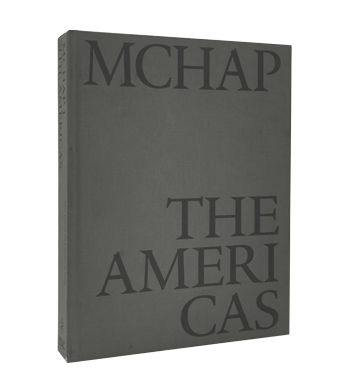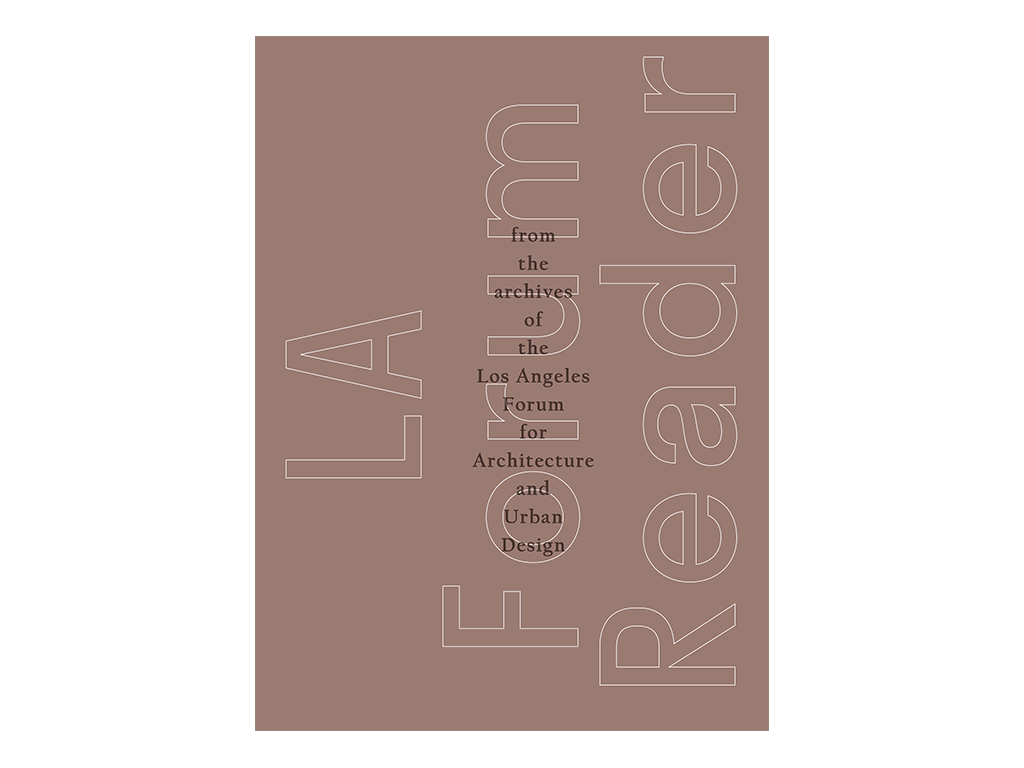America is an invention. Because there is a hiatus between the word “America” and the object it designates, it often needs to be reinforced and qualified. My America might not be the same as yours. Pan-American or trans-American are expressions that were coined to encompass an all too vast territory and to expand the sovereignty of a word that is synecdochically attached to just one nation, the United States of America. In order to separate out and to acknowledge difference, the preferred term in English, “the Americas,” is a plural noun: the continent cannot be held together by just a small isthmus; the cleft of the Panama Canal is a superficial bruise insufficiently deep to separate the two parts. Moreover, the difference between North America and South America is equally dubious, as the “South” occupies half of the “North”.Before us there lies a gigantic land mass, which for centuries astounded the successive waves of settlers and colonizers arriving from Europe and formed the backdrop to, and object, of a massive endeavor. The name of this vast territory derives from exogenous readings and from an initial misunderstanding. It originates in the Latin name of an Italian navigator working for the Portuguese Crown, Amerigo Vespucci, who discovered that Brazil and the West Indies were not the eastern edge of India, as originally believed, but rather a novel entity, Mundus Novus, the New World. The word “America” first appeared in print in 1507 on German cartographer Martin Waldseemüller’s world map, Universalis Cosmographia, the first to depict the continent as an elongated slice of land, a separate entity floating in the ocean. This act of naming was an act of power, erasing the identity of existing states and nations, and it was accompanied by numerous political and intellectual debates about the legitimacy and the modes of European conquest.
Throughout the course of an accelerated historical arc extending from Columbus’s fortuitous encounter of the Caribbean islands to the present day, the issues regarding the name or the names of this continent have been fundamental, and charged with political undertones. “Latin America” was a term coined by the French during their unsuccessful attempt to conquer Mexico (1862-1867) in order to diminish the relationship of the former colony with Spain and, within a new political narrative, to incorporate an artificial concept of Latin culture, including France. Italy, and Portugal. In Napoleon III’s vision of Latin America, the French-speaking part of Canada was not included, so as not to generate unnecessary political tension with Great Britain.
Hispanoamérica, Iberoamérica or the juxtaposed Angloamérica correspond to different groupings of countries, in which numerous factors determine their inclusion or exclusion (language, location, history). Some islands in the Antilles and in the Caribbean, and several vestiges of colonial times (French Guyana or Belize, often depicted on maps as grey areas), are forever problematic: to which America do they belong? And who decides it?
None of these terms and none of the other specific toponyms used to name a region or a site are neutral and consensual, deriving from a slow stratification of language over time, but are often at the center of intense debate and political polarization. Tensions arise not only with regard to the simplistic juxtaposition of English and Spanish (and Portuguese to a lesser degree), and to the appropriation or erasure of the names used by the pre-existing inhabitants but represent a far more fluid and intense linguistic and political field. This field includes (or should include) the native pre-Columbian peoples, submitted to traumatic processes of genocide and oppression on an unparalleled scale, the descendants of the enslaved population, forcefully brought from Africa to provide labor, and the successive waves of immigrants of every possible origin, who arrived in the continent, pursuing very different objectives (a search for religious freedom, escape from tyranny, economic opportunities).
America continues to be a concept in the making.
Within such an uncertain and at the same time fascinating cultural context, the objectives of the Mies Crown Hall Americas Prize (MCHAP), and of the present publication, which accompanies it, are to explore where an idea of architecture in the Americas might be arrived at. The project aims to understand what the common components and discernible elements are, and what a proper narrative might be; a narrative that instead of compressing local differences into a generic common denominator would communicate the polyphony of positions and the depth of current architectural design and production. This intellectual project also operates—as has most of the history of the continent—in opposition to external models: determining what such architecture is implicitly generates reflection about what differentiates it from European or Asian architecture. All the same, the project eschews overly simplistic generalizations: as it is meaningless to posit an Asian, European or American architecture, the focus is on architecture built in the Americas. The launch of the MCHAP in 2014 facilitated this semantic shift, which has made it possible to, on the one hand, observe architectural production within a broader international context of cultural, economic, and political exchange, often beyond the Americas, and on the other, to direct attention towards the contextual conditions and typologies within which architects operate. While it seems futile to claim the existence of generalized architectural tendencies across the continent, it is indeed possible to observe how certain phenomena and trends are occurring simultaneously, and how architects are responding to such evolving conditions.
By establishing a perimeter, the Americas, which corresponds to all the 36 independent countries represented in the Organization of American States (including a suspended Cuba) and to all the existing colonies and overseas territories, MCHAP sought to minimize, in a very pragmatic way, the discussion of identity by taking location to be a more powerful cognitive tool when it comes to observing and understanding reality. In some cases the selected projects were designed by “foreigners”: the complex networks mobilized at a local and international level, and their point of convergence in a specific site, seemed a more powerful consideration than the nationality of the main author. The growing interdependence of American countries in cultural, economic, and political terms, accelerated by the end of the Cold War, together with the impact of globalization and neoliberal policymaking in the region, enable us to observe specific variations occurring at many different points and on a vaster scale. Buildings, infrastructural interventions, landscape design, and the planning of public space, undertaken from the Artic to Tierra del Fuego between 2000 and 2014, are to be considered as so many investigations into the wider conditions that are in play.
The structure and contents of this book reflect this conceptual position, which the competition adhered to throughout its development, from the initial call for candidate projects, via the successive cullings performed by the jury, up to the awarding of the final prizes: architecture cannot be judged as an art per se but as a sophisticated form of knowledge capable of synthesizing numerous, and at times conflicting, elements. The seven competition finalists were not simply the “most beautiful,” but rather the most compelling examples of the capacity of architectural design to absorb reality and to reformulate it through a novel arrangement, opening up the possibility of rethinking the relationship between space and society.
Each finalist project has thus been taken as the initial kernel around which to condense a wider exploration of the contemporary Americas, and instead of focusing the reader’s attention on the noteworthy qualities of the selected designs—designs which have, in any event, already acquired the status of almost canonic oeuvres—the book collates a series of collateral contents around them. The principal objective is to establish an open platform of reflection with three different strategies.
The first is to document the current cultural atmosphere surrounding architectural production through identification of the specific thematic trends that are at work today, either at the level of macroscopic economic, cultural, and economic transformation, or at the level of how architecture is conceived and operates. The role played by mobility infrastructures in the definition of architectural typologies; the relationship between public and private initiatives in the provision of collective assets; the processes of urban densification leading to the upsurge of vertical forms of housing in Latin America; the transformation of the role and organization of libraries in the US, and the relevance of religious affiliations in the processes of transformation of the urban realm are relevant tendencies that are legible in numerous and very different situations.
The transfer of technological expertise and knowledge between countries and its impact on design and the role of travel and cultural exchange for designers are relevant to the processes of architectural design.
These topics, which derive from a reading of the seven finalist projects, have been explored through the combination of different elements: commissioned original essays aimed at unraveling a parallel reading to the project; an anthological selection of existing texts; a visual essay based on the work of artists; an assessment of the project by one of the jury members, and a transcript of the roundtable sessions of the MCHAP, in which different stakeholders, including clients, users and designers, debated with the jury about the wider implications of each finalist project.
The second strategy is aimed at deepening our historical understanding of current phenomena: whether within the commissioned essays or through the selection of texts included in the anthology, the principal intention has been to suggest that ongoing tendencies which appear to be novel and unprecedented have longer and slower trajectories. The combination of materials does not set out to demonstrate a clear concatenation of successive causes and effects, but seeks, rather, to elicit in the reader the sensation that even the possibility of identifying common threads within the Americas is based on a longer accumulation of gradual fluctuations, often firmly rooted in the past. For that reason the lapse of time within which the anthological texts fall begins with Alexander von Humboldt’s travel memoirs and ends with recent online articles about the future of libraries. (Even earlier accounts of European discoveries and invasions could have been included, in fact).
The third strategy is to demonstrate a widespread equivalence between different contexts. Recent architectural historiography has often repeated a consecrated narrative in which the transmission of knowledge has kept to a defined timeline and has gone in specific directions. For instance, most assessments of the relationship between the USA and Latin America consider the 1943 exhibition Brazil Builds and the 1945 exhibition Latin American Architecture at the Museum of Modern Art in New York to be seminal cornerstones of such a dialog. On the other hand, the development of modern architecture in the USA and in Latin America is often depicted as a derivative move generated by European influence, either indirectly through both the press and exhibitions, or via the numerous expatriates who began arriving in the early 1930s, after leaving a troubled continent. The anthology seeks to undermine such a historiographical paradigm by suggesting that bilateral relations were far more complex, and often followed less evident routes; that there were simultaneous initiatives and experiments occurring in different places without reciprocal knowledge; and that innovative forms of expertise and applied research did not keep to a unidirectional path, but had a profound influence on some authors, as in the case of Le Corbusier’s ideas about city and territory, which radically changed after his first South American visit. The combination of elements in each section aims to convey an intellectual atmosphere about the Americas, one no longer grafted onto notions of center and periphery but rather to be conceived as a net of reciprical exchanges. Such an attitude is in tune with the overall picture depicted in the projects selected by the MCHAP, in which genuine innovation through architectural design and the capacity to tackle pressing issues are happening throughout the continent, without any legible predominance of one place over another.
The access to this book is multiple. It is only the physical constraint of bound pages that appears to respect a sequence, when in actual fact the different sections have an equivalent role to play and may be read in a non-consecutive order. Hopefully, attracted by the book’s heterogeneity, the reader will saunter through it, thereby constructing her or his own montage, her or his own interpretation. Navigation through its pages ought to be random: if this book were a territory, it would be an archipelago. For Martiniquan writer, poet, and philosopher Édouard Glissant, it was in the American archipelagos, particularly the Antilles, that the more complex processes of creolization first occurred. This was due to the absence of a strong center and the fragmented configuration of the many islands; for Glissant, the continents rejected mixing. In an archipelago individual and collective identities are not fixed, but in a constant state of negotiation. MCHAP and this volume are but temporary frames of a state of perpetual motion, in which what America means and the kinds of architecture that respond to this are forever in flux. Our hope is that the encounters fostered by this initiative will go on constructing our future architectural creole.












